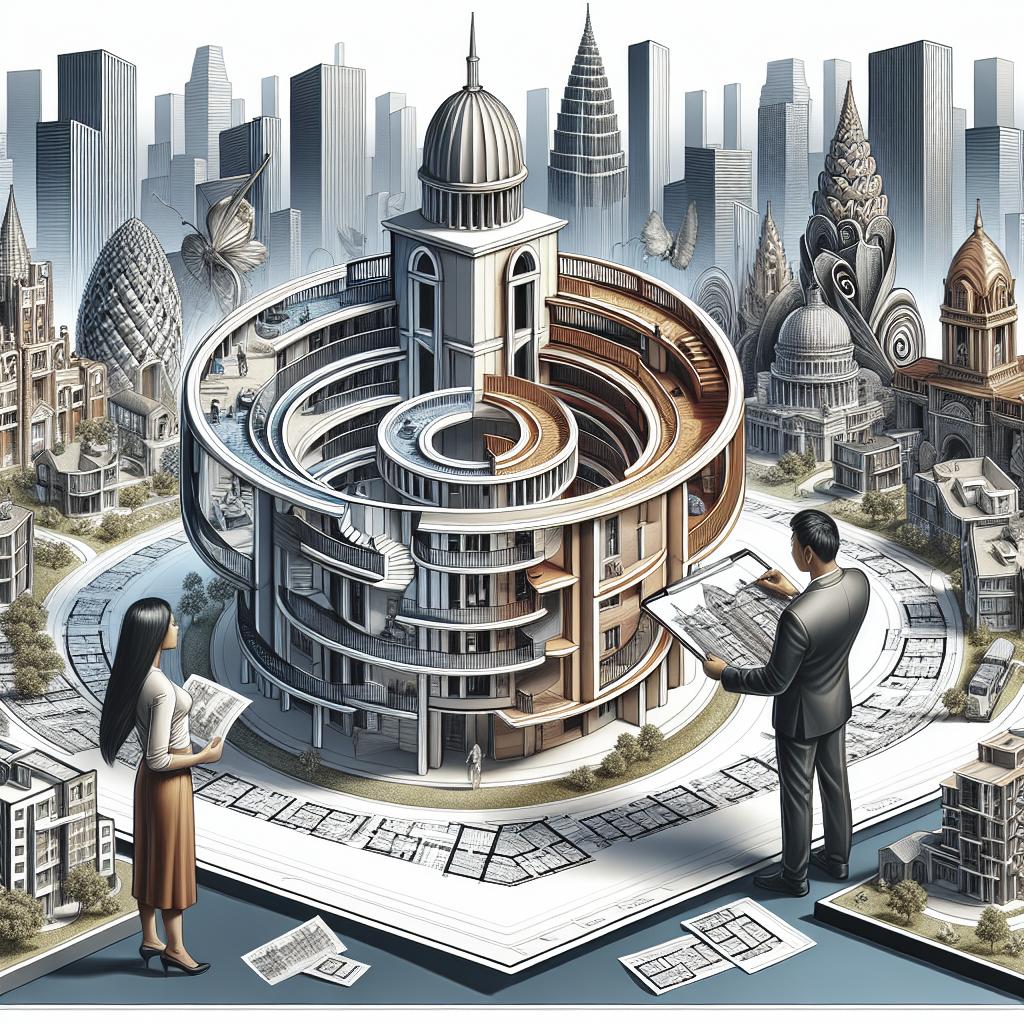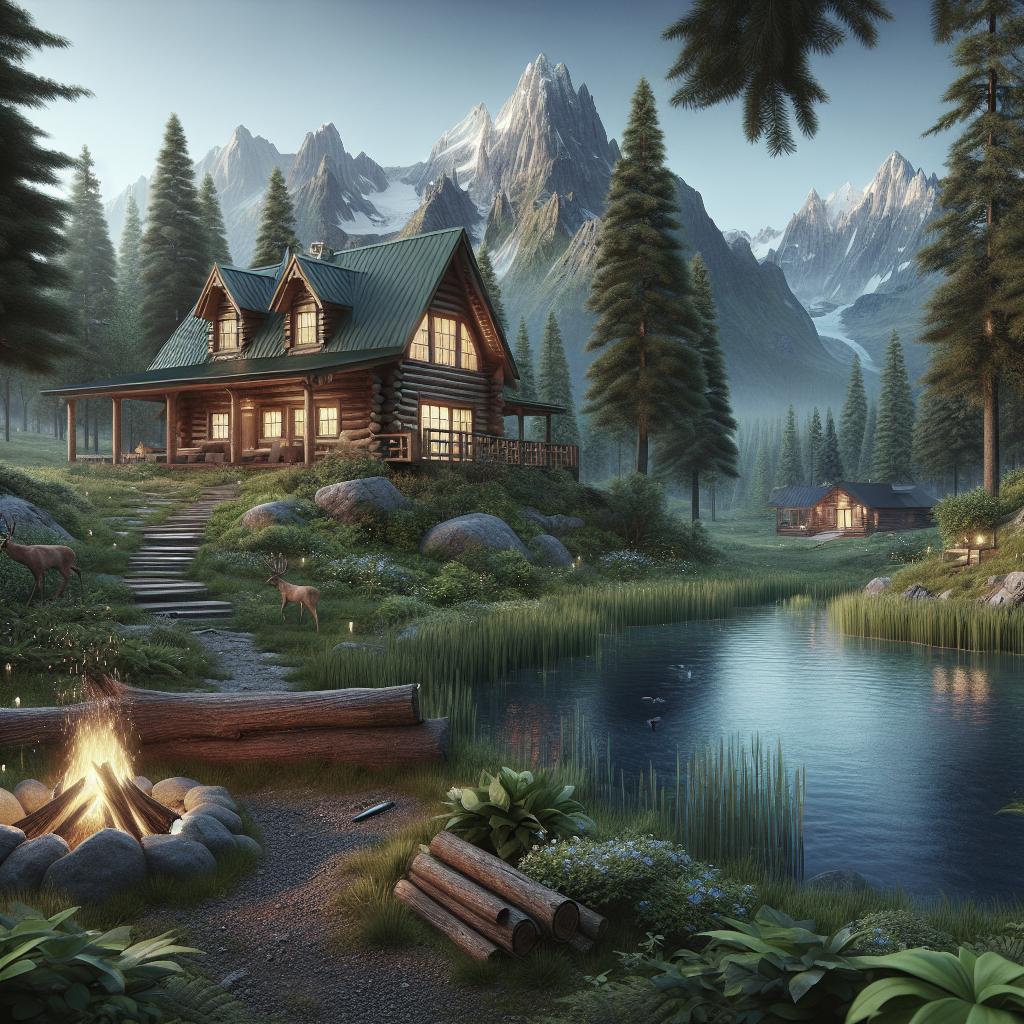How to Select Accommodations with Unique Architecture
Selecting accommodations with unique architecture not only enhances the travel experience but also offers guests a distinctive connection to the culture and environment of a destination. This article explores various aspects of choosing extraordinarily designed resorts, from understanding target markets and embracing sustainable design to integrating technology and adhering to local building codes. Discover how to balance creativity with practicality and create lasting architectural impact through thoughtful planning and innovative design.
Research and Conceptualization
Understanding the Resort’s Target Market and Location
Before embarking on the architectural journey, it is crucial to comprehend the resort’s target market. Understanding the preferences and expectations of potential guests helps in tailoring the design to create a memorable experience. For instance, a family-oriented resort might prioritize safety and communal areas, while a couple’s retreat may focus on privacy and romantic settings.
The location’s geographical and cultural context also plays a significant role in influencing architectural decisions. A beachfront property, for example, might prioritize open views and natural ventilation, while a mountainous resort could favor insulated structures and cozy interiors.
Identifying Architectural Styles That Align with the Resort’s Theme
Each resort should have a central theme, which is significantly expressed through architectural style. It is essential to align the style with the theme to create a coherent and immersive environment. Modern, minimalist resorts highlight sleek lines and functional spaces, while rustic lodges may emphasize natural materials and a homely atmosphere.
Exploring diverse architectural styles such as Mediterranean, Balinese, or Scandinavian can add a unique flair. The selection must resonate with the guests and offer a visually appealing experience that aligns with their expectations and the resort’s brand identity.
Exploring Local Culture and History for Inspiration
Local culture and history serve as a vast resource for architectural inspiration. Integrating these elements into the design can provide authenticity and a sense of place. For instance, incorporating indigenous art forms or traditional construction techniques can narrate the story of the locale.
Designers can collaborate with local artisans and historians to ensure that the architecture pays homage to the region while offering a modern twist. This blend not only honors the local heritage but also enchants guests seeking an immersive cultural experience.
Sustainable Design Approach
Incorporating Green Building Principles and Eco-Friendly Materials
Sustainable design is vital in creating environmentally responsible accommodations. Green building principles focus on energy efficiency, water conservation, and the use of sustainable materials. Selecting non-toxic, recycled, or locally sourced materials decreases the environmental footprint.
Eco-friendly design extends beyond materials, incorporating waste reduction strategies and responsive building operations. Smart energy systems, natural light maximization, and water preservation techniques contribute significantly to sustainability goals.
Utilizing Renewable Energy Sources and Energy-Efficient Systems
Implementing renewable energy sources like solar, wind, or geothermal can greatly reduce a resort’s carbon footprint. These technologies not only contribute to long-term savings but also appeal to environmentally conscious travelers.
Energy-efficient systems, such as smart lighting, HVAC systems, and energy management software, enhance operational efficiency and lower energy bills. These advancements ensure that the resort maintains comfort without sacrificing innovation or sustainability.
Creating a Symbiotic Relationship with the Natural Surroundings
A well-integrated resort respects and highlights its natural environment. By carefully analyzing the site, the design can nurture a symbiotic relationship, where architecture complements the landscape rather than overpowering it.
Preserving natural vegetation, optimizing building placement for natural ventilation, and designing for minimal disturbance to the ecosystem all enhance this harmonious relationship. Guests will appreciate the thoughtful integration of natural elements, which elevates their overall experience.
Site Analysis and Master Planning
An initial site analysis identifies opportunities and constraints, serving as the foundation for master planning. Understanding topography, climate, and existing vegetation informs the spatial arrangement and architectural orientation.
The master plan translates vision into a tangible layout, ensuring optimal space utilization and smooth operational flow. Carefully orchestrating functional zones, circulation paths, and amenities helps create a cohesive and immersive environment.
Architectural Elements and Aesthetics
Architectural elements are the building blocks of any resort, dictating form, function, and aesthetics. From facades and rooflines to materials and colors, each component must align with the resort’s vision while enhancing guest appeal.
Aesthetics play a critical role in forming first impressions. Achieving a balance between aesthetics and utility ensures that the design remains timeless and practical. Considering scale, proportion, symmetry, and texture helps in crafting a harmonious visual narrative.
Accommodation Design
Choosing the Right Room Types and Layouts for Guest Comfort
Accommodation design strongly influences guest satisfaction. Room types and layouts should cater to diverse needs, offering options like standard rooms, suites, and family units. Thoughtful space planning maximizes comfort and usability, ensuring a hassle-free stay.
In-room amenities like integrated technology, smart storage solutions, and flexible furnishings enhance convenience and appeal. Prioritizing quality in materials, fixtures, and finishes ensures a luxurious yet durable environment that stands the test of time.
Creating Private Retreats with Exceptional Resort Interior Design
Private retreats within the resort offer sanctuaries of relaxation and rejuvenation. Harmoniously blending aesthetics with functionality encourages guests to unwind and experience tranquility away from daily distractions.
Skilled interior design, embracing ambient lighting, custom furnishings, and curated art pieces, elevates the guest experience. These elements, combined with personalized touches, create lasting impressions.
Incorporating Balconies, Terraces, or Verandas for a Connection to Nature
Outdoor spaces such as balconies, terraces, or verandas bridge the gap between interiors and the natural world. These features encourage guests to enjoy fresh air, scenery, and a sense of freedom while maintaining privacy.
Ensuring that these areas have comfortable seating and sheltered spaces adds value to the guest experience. The design should prioritize unobstructed views and natural integration for a seamless connection to the outdoors.
Signature Facilities and Amenities
Signature facilities, ranging from infinity pools to bespoke wellness centers, define the resort’s character. These amenities elevate luxury offerings and enhance overall appeal. Designing with flair and functionality in mind ensures long-term success.
Additional amenities such as gourmet dining, kids’ clubs, and event spaces cater to a spectrum of preferences. Ensuring service quality aligns with the architectural grandeur underlines the resort’s reputation.
Harmonious Integration with Nature
Harmonizing with nature enhances the resort’s allure, blending building elements with surrounding landscapes. Natural landscaping, indigenous flora, and ecologically sensitive construction promote environmental symbiosis.
This integration extends to views and lighting, where thoughtful placement maximizes daylight while preserving nocturnal darkness. The careful orchestration of stillness and sound contributes to a serene environment.
Resort Sustainability and Resilience
Implementing Disaster-Resilient Design Strategies
Resilience is paramount in safeguarding resort operations against natural disasters, such as hurricanes or earthquakes. Utilizing robust materials, reinforced structures, and elevation planning reduces risk and facilitates recovery.
Designing with redundancy, readiness, and adaptability fosters a resilient mindset. Collaborating with expert consultants ensures that the resort’s infrastructure can withstand and adapt to unforeseen challenges.
Creating Adaptable and Flexible Buildings for Future Needs
Adapting to future changes requires foresight and proactive strategies. Building designs should exhibit flexibility, easily accommodating alterations in guest preferences, operational technologies, or market dynamics.
Incorporating adaptable infrastructure, modular layouts, and multipurpose spaces ensures relevance and longevity. Future-proofing strategies help maintain competitiveness, sustainability, and guest appeal.
Evaluating Long-Term Maintenance and Lifecycle Considerations
Sustainable maintenance minimizes environmental impact and ensures value retention. Evaluating lifecycle stages from construction to decommissioning aids in selecting long-lasting materials and systems.
Establishing efficient maintenance regimes reduces operational expenses, enhances durability, and extends the lifecycle. Regular assessments of infrastructure and facilities ensure continuous operational performance.
Technology and Smart Design
Smart design leverages technology, enhancing convenience, security, and sustainability. Integrating IoT devices, contactless systems, and intelligent automation optimizes guest experiences and operational efficiency.
Embracing technology, such as AI-driven building management systems or cloud-based reservation tools, improves responsiveness and personalization. These innovations differentiate resorts in a competitive landscape.
Local Regulations and Building Codes
Navigating Local Building Codes and Regulations
Compliance with local building codes and regulatory frameworks is essential. Familiarity with zoning laws, environmental standards, and permitting requirements ensures legal and safe development.
Collaborating with legal and regulatory experts facilitates seamless approval processes, mitigating risks and delays. Active engagement with authorities cultivates positive relationships, benefitting long-term operations.
Complying with Environmental and Cultural Preservation Requirements
Respecting environmental and cultural mandates aligns with ethical and operational goals. Assessing environmental impact, preserving cultural heritage, and adopting conservation practices prioritize responsibilities to the planet and society.
Integrating performance monitoring, compliance documentation, and continuous improvement frameworks ensures adherence to evolving requirements, promoting sustainable growth and community acceptance.
Engaging with Local Architects and Professionals for Expertise
Local architects bring invaluable expertise and insights into regional nuances and practices. Engaging with these professionals enables contextually relevant, culturally sensitive, and legally compliant designs.
Fostering collaboration through partnerships between global and local experts enhances resource access, innovation, and project success. These synergies mutually benefit stakeholders, enhancing overall project outcomes.
Collaboration and Project Management
Building a Cohesive Team of Architects, Designers, and Contractors
An effective architectural project relies on multidisciplinary collaboration. Building a cohesive team of architects, designers, and contractors ensures that diverse perspectives enhance creativity and execution.
Clear communication, mutual respect, and defined roles minimize conflicts, misunderstandings, and redundancies. Fostering a collaborative ethos aligns team objectives, promoting efficient and seamless construction.
Coordinating with Landscape Architects for a Holistic Approach
Landscape architects play a pivotal role in integrating built and natural environments. Coordinating with these experts aids in creating cohesive resort layouts, where architecture and nature complement each other.
Utilizing topographic knowledge, ecological insights, and horticultural expertise enriches aesthetics and sustainability. This holistic approach generates immersive guest experiences connected to nature.
Guest Experience and Architectural Impact
Unique architectural design directly influences guest perceptions and satisfaction. Architectural storytelling, design coherence, and experiential features create lasting impressions that resonate beyond the stay.
Prioritizing guest-centered design fosters positive interactions, enhances loyalty, and stimulates referrals. Aligning architecture with guest needs and desires ensures impactful experiences and sustainable competitiveness.
Case Studies of Iconic Resort Architecture
Case studies of iconic resort architecture highlight innovative approaches and successful implementations. These examples illustrate best practices, serving as inspiration for aspiring and established designers.
Exploring successful projects imparts lessons on material selection, cultural integration, technological innovation, and sustainability. These insights guide future designs, enriching the architectural landscape.
Think Architecture: The Experts in World-Renowned Design
Think Architecture is at the forefront of world-renowned design excellence. Combining innovation, craftsmanship, and sustainability, they pioneer cutting-edge projects that captivate and inspire.
Their portfolio showcases transformative projects, blending cultural influences with modern technology. Whether envisioning eco-resorts or urban retreats, Think Architecture thrives at delivering captivating guest experiences.
Next Steps
| Aspect | Content Summary |
|---|---|
| Research and Conceptualization | Identify the target market, suitable design styles, and cultural inspirations. |
| Sustainable Design Approach | Implement eco-friendly design, renewable energy, and harmony with nature. |
| Site Analysis and Master Planning | Conduct site analysis and develop a comprehensive master plan. |
| Architectural Elements and Aesthetics | Select appropriate architectural elements that enhance guest appeal and functionality. |
| Accommodation Design | Design for guest comfort, private retreats, and connection with nature. |
| Signature Facilities and Amenities | Create signature facilities and amenities that define resort character. |
| Harmonious Integration with Nature | Maintain ecological balance and promote natural integration. |
| Resort Sustainability and Resilience | Incorporate disaster resilience, building adaptability, and maintenance plans. |
| Technology and Smart Design | Integrate technological advancements for enhanced guest experiences. |
| Local Regulations and Building Codes | Navigate local regulations, cultural preservation, and engage local expertise. |
| Collaboration and Project Management | Build cohesive teams and coordinate landscape integration for effective projects. |
| Guest Experience and Architectural Impact | Ensure architectural design enhances guest satisfaction and experience. |
| Case Studies of Iconic Resort Architecture | Analyze case studies for insights on successful architectural approaches. |
| Think Architecture | Highlight Think Architecture’s role in delivering innovative, world-renowned designs. |


